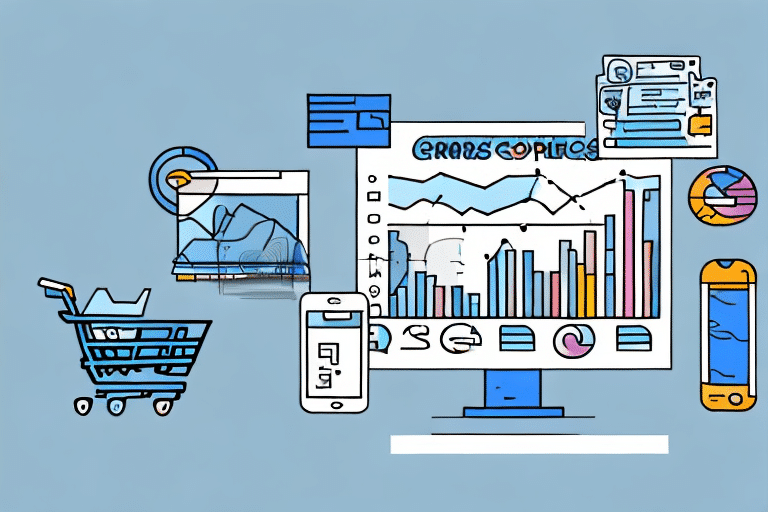Importance of Pricing Strategy in Ecommerce Scaling
Scaling your ecommerce business presents both opportunities and challenges. One of the most critical aspects to address during this growth phase is your pricing strategy. An effective pricing strategy directly influences profitability, customer acquisition, and long-term success.
According to a Statista report, global ecommerce sales are projected to exceed $6.4 trillion by 2024. In this competitive landscape, a well-crafted pricing strategy can differentiate your brand and attract a larger customer base.
Key Factors Affecting Pricing During Scaling
Cost Analysis and Pricing Sustainability
As your ecommerce business scales, various costs such as goods, advertising, and shipping increase. Conducting a thorough cost analysis ensures that your pricing remains sustainable and profitable. Utilize tools like cost analysis frameworks to evaluate all expenses and adjust your prices accordingly.
Adapting to Market Trends and Economic Conditions
External factors like market trends and economic conditions play a significant role in shaping your pricing strategy. For instance, during periods of high demand, you might implement premium pricing, while economic downturns may necessitate more competitive pricing to retain customers.
Common Pricing Mistakes to Avoid
- Ignoring Competitors’ Prices: Failing to monitor competitor pricing can lead to misaligned prices, either too high or too low, affecting your market position.
- Over-reliance on Discounts: Frequent discounts can devalue your products and erode profit margins. It's essential to use them strategically.
- Neglecting Cost of Goods Sold (COGS): Not accounting for COGS can result in selling products at a loss, undermining your business’s financial health.
- Misjudging Customer Perceived Value: Pricing too low may suggest low quality, while pricing too high might deter potential customers.
Strategic Pricing Techniques
Pricing Models: Cost-Plus, Value-Based, and Competition-Based
Choosing the right pricing model is essential. The cost-plus model adds a markup to the production cost, the value-based model sets prices based on perceived value to customers, and the competition-based model aligns prices with competitors.
For detailed insights on pricing models, refer to the Harvard Business Review.
Dynamic and Variable Pricing
Dynamic pricing adjusts prices in real-time based on demand, competition, and other factors. This approach can maximize profits by capitalizing on high-demand periods and optimizing inventory management.
Implementing dynamic pricing requires robust pricing software and data analytics to track and respond to market changes effectively.
Strategic Discounts and Promotions
Offering discounts during peak seasons or special events can boost sales without permanently lowering your product’s perceived value. However, it’s crucial to balance promotions to maintain profitability.
Market Research and Competitor Analysis
Understanding Your Target Audience
Comprehensive market research helps you grasp your customer base's preferences and purchasing behavior. Tools like Google Trends and customer surveys can provide valuable insights.
Analyzing Competitor Pricing
Regularly monitor your competitors’ pricing strategies to stay competitive. Utilize competitor analysis tools to gather data and inform your pricing decisions.
Tools and Technologies for Pricing Optimization
Investing in pricing optimization tools can streamline your pricing strategy. Software solutions like Pricefx and PROS offer dynamic pricing, analytics, and forecasting features to enhance your pricing strategy.
Additionally, automation tools can help implement and adjust pricing in real-time, ensuring you remain responsive to market changes.
Communicating and Implementing Pricing Changes
Best Practices for Transparency
When adjusting prices, transparency with your customers is paramount. Clearly communicate the reasons for price changes, such as increased costs or enhanced product features, to maintain trust and credibility.
Maintaining Customer Trust
Consistent and honest communication helps in retaining customer loyalty. Providing advance notice and explaining the benefits of pricing changes can mitigate negative reactions.
Outsourcing Your Pricing Strategy
Benefits of External Expertise
Outsourcing your pricing strategy can offer specialized expertise, advanced tools, and data-driven insights that may be resource-intensive to develop in-house.
When to Consider Outsourcing
Consider outsourcing your pricing strategy when your business lacks internal expertise, resources are stretched during scaling, or when seeking an objective perspective to enhance your pricing model.
Conclusion
Adapting your pricing strategy is essential for the successful scaling of your ecommerce business. A well-defined pricing strategy not only ensures profitability and competitiveness but also enhances customer satisfaction and loyalty. By understanding key factors, avoiding common mistakes, leveraging strategic techniques, and utilizing advanced tools, you can optimize your pricing approach to support sustainable growth and long-term success.
For further reading on ecommerce pricing strategies, explore resources from Shopify and Entrepreneur.




















